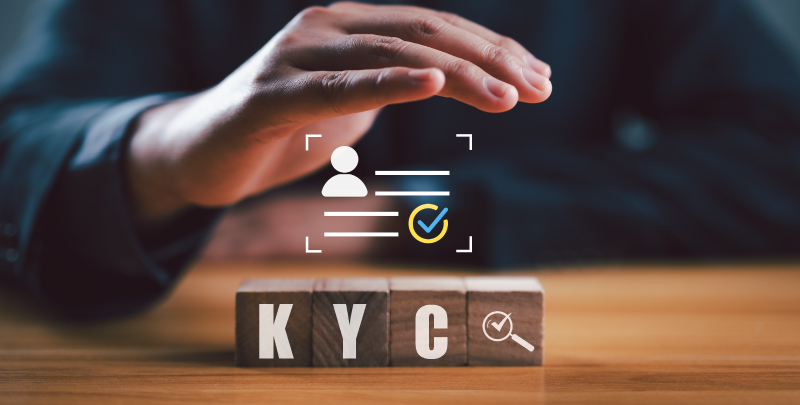Understanding the differences between e-KYC and v-KYC improves your end-to-end digital banking experience. Both
methods streamline the customer verification process but have distinct features and benefits. In this article, we
will explore both methods in depth to gain a clearer understanding of how they work.
What is KYC?
KYC (Know Your Customer) is a mandatory process used by financial institutions to verify customer identities,
ensuring security and fraud prevention. Traditionally, this involved physical verification, but digital advancements
have made the process more convenient.
What is full-KYC?
Full-KYC is a comprehensive verification process where your identity and address are verified in detail using
documents like your Aadhaar, PAN card, or passport, which are then physically verified by a financial institution
representative. Full-KYC is essential for accessing a wide range of financial services, including opening a Bank Account and obtaining loans.
What is half-KYC or e-KYC?
e-KYC is a digital version of KYC, allowing you to verify your identity online using your Aadhaar details. While it’s
fast and convenient, e-KYC may have limitations, such as lower transaction limits and access restrictions on certain
services.
Benefits of e-KYC
- Convenience: Complete your KYC process entirely online, from the comfort of your home, without
the need for physical visits.
- Speed: Instant Aadhaar-based verification allows for quick access to banking services, reducing
waiting times significantly.
- Cost-effective: Eliminate the need to submit physical documents, saving time and money on
paperwork and travel.
Restrictions of e-KYC
- Service limitations: With e-KYC, certain banking services may have restrictions, such as lower
account balance limits or transaction caps, compared to full-KYC.
- Validity period: e-KYC may only be valid for a limited period, after which you may need to
complete a full-KYC to continue enjoying all services without interruption.
What is video-KYC?
Video-KYC is a newer process that uses video calls for real-time identity verification. A representative verifies
your documents during the call, offering a secure and comprehensive alternative to in-person verification.
Benefits of video-KYC
- Full-KYC: Video-KYC provides comprehensive verification similar to traditional KYC, allowing
you access to a full range of banking services without needing in-person visits.
- Convenience: You can complete the entire KYC process from the comfort of your home through a
live video interaction with a bank representative, making it both easy and efficient.
- Security: The real-time nature of video-KYC adds an extra layer of security by enabling the
bank to verify your identity and documents instantly, significantly reducing the risk of fraud.
Differences between e-KYC and v-KYC
| Aspect |
e-KYC |
v-KYC |
| Verification process |
Automated Aadhaar-based verification |
Live video interaction with a bank representative |
| Scope |
Suitable for basic financial services |
Suitable for a full range of financial services
|
| Implementation |
The quick and automated online process |
Requires scheduling and completing a video call |
| Purpose |
Ideal for quick access to basic services |
Ideal for comprehensive services with full-KYC benefits
|
Choosing between e-KYC and v-KYC
Choosing between e-KYC and v-KYC depends on your needs and service requirements. For quick access to basic banking
services, e-KYC offers convenience. However, if you require a broader service range with higher transaction limits,
v-KYC is the better option.
Also Read: What is CKYC (Central KYC)?
An end-to-end digital experience
The shift to digital KYC, whether through e-KYC or v-KYC, marks a major advancement in banking, offering unparalleled
convenience, speed, and security compared to traditional methods.
For an enhanced banking experience, consider a savings account that integrates seamlessly with these modern
processes. With features like a virtual e-debit card, and exclusive rewards such as offers and discounts, the Axis Bank’s Digital Savings Accounts are designed to meet your
financial needs while providing a smooth, digital onboarding experience.
Disclaimer: This article is for information purpose only. The views expressed in this article
are personal and do not necessarily constitute the views of Axis Bank Ltd. and its employees. Axis Bank Ltd.
and/or the author shall not be responsible for any direct / indirect loss or liability incurred by the reader
for taking any financial decisions based on the contents and information. Please consult your financial advisor
before making any financial decision.







